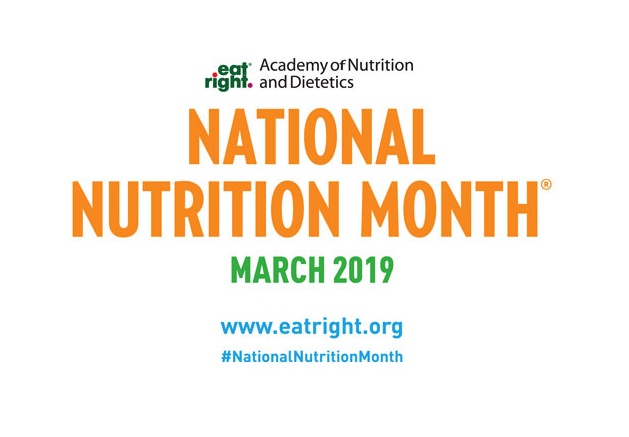
What is National Nutrition Month?
March is National Nutrition Month, an entire month dedicated the education, information, and awareness for healthy nutrition and dietetics. National Nutrition Month focuses on helping people make informed food choices and promotes healthy eating habits.
Registered Dietitian Nutritionist Day, also celebrated in March (March 14), increases awareness of registered dietitian nutritionists as the indispensable providers of food and nutrition services and recognizes RDNs for their commitment to helping people enjoy healthy lives.
What we put in our bodies makes a difference, and during National Nutrition Month, you can participate with the Academy of Nutrition and Dietetics in raising awareness about the importance of forming a healthy eating plan. You can learn more about National Nutrition Month here, and get everything you need to promote it.
Facts About Our National Nutrition
If you’re still unsure why National Nutrition has its own month, check out some of these staggering facts below.
- Typical American diets exceed the recommended intake levels or limits in four categories: calories from solid fats and added sugars; refined grains; sodium; and saturated fat.2
- Americans eat less than the recommended amounts of vegetables, fruits, whole grains, dairy products, and oils.2
- About 90% of Americans eat more sodium than is recommended for a healthy diet.8
- Reducing the sodium Americans eat by 1,200mg per day on could save up to $20 billion a year in medical costs.8
- Since the 1970s, the number of fast food restaurants has more than doubled.2
- More than 23 million Americans, including 6.5 million children, live in food deserts – areas that are more than a mile away from a supermarket.9 Facts come from HHS.gov.
Quick Tips for Staying Healthy on a Budget
One of the biggest reasons people can’t maintain a healthy, nutritious diet is because of the failure to reconcile more expensive, whole food against plentiful, processed, unhealthy foods. However, by applying four practical criteria to your food purchases, you can keep costs and calories down while upping your nutritional value.
Look for Sales and Seasonals
Buying at the right time of the season means that a bountiful harvest can net you bountiful savings. Let supply and demand work for you. When vegetables and fruits are in season, buy them up. Look for recipes that incorporate plentiful and seasonal foods so you can make the most of them. Additionally, you can cook, can, and freeze some to make them go further.
More Whole, Less Processed
If you want to get healthier, buy better ingredients. You can also think of this as addition by subtraction. Cut out the processed food and replace it with a healthier or option, or, if it’s not a necessity, consider going without it altogether
Don’t Buy What You Won’t Eat
Sometimes we buy on autopilot. Sometimes we buy with best intentions, but then don’t end up eating what we bought. Sometimes our freezers fill up with things we meant to eat but never do. Don’t do this! Make a plan before you go to the grocery store. Map out your meals for the week and make a list of ingredients. Then go into the store and buy only what you need to make your meals. Buying fewer items, but with a sharper focus on what you need to eat, helps you cut unnecessary calories and save money.
Pass on the Junk
This should go without saying, but, we’re saying it anyway: pass on junk food! You don’t need it. And you don’t need to pay for it. If you have already done your shopping and made your healthy choices, don’t deviate once you hit the check out line and are tempted by glossy packages with well-known brand names. All they will do is increase your expenses and your calorie intake.
If you or someone you know needs food assistance, locate a list Ohio food pantries by city here.

